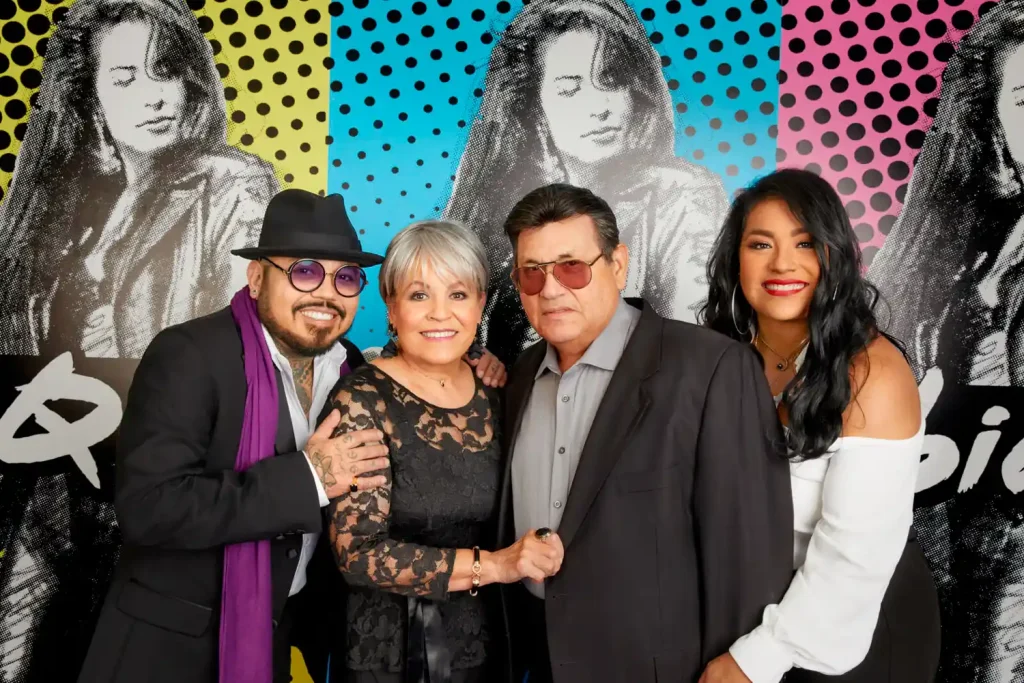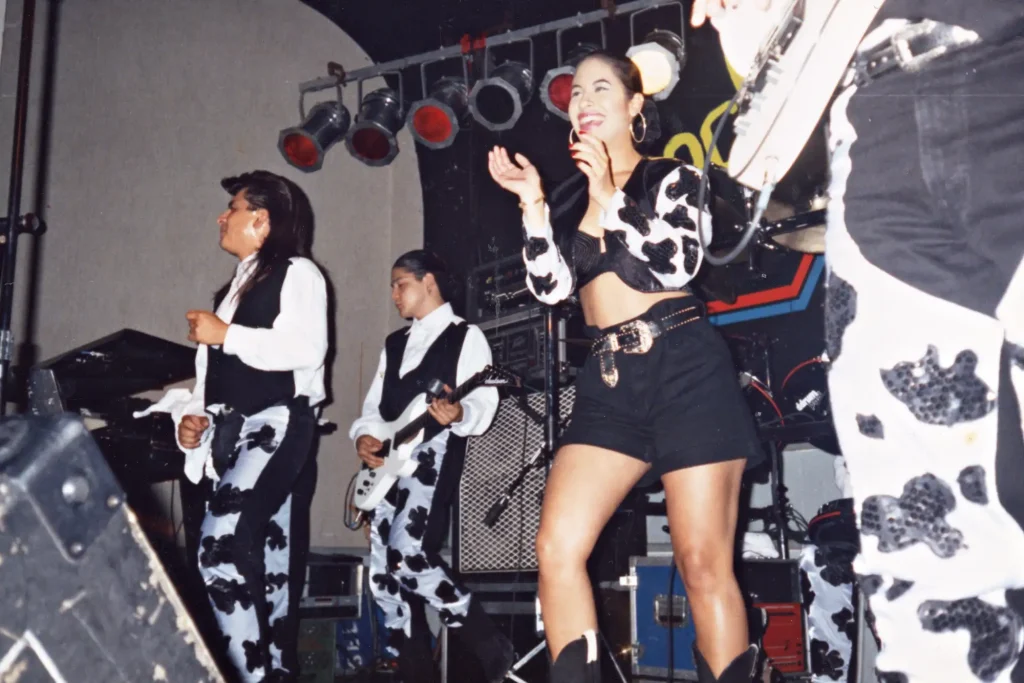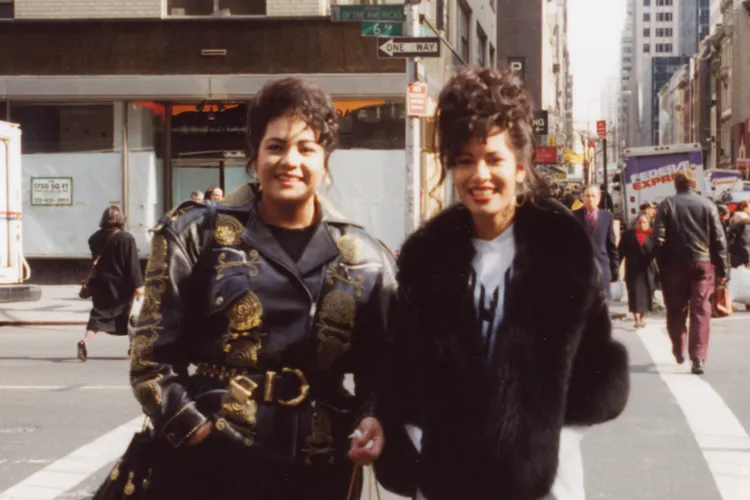30 Years After Selena’s Death, Her Sister Suzette Opens Up About the Real Selena — “Extremely Funny, Completely Real… I Still Miss My Sister Every Day”
Thirty years have passed since the world lost Selena Quintanilla, yet the grief still lives quietly in the voice of her older sister, Suzette Quintanilla, every time she speaks about the young woman whose life ended far too soon. On March 31, 1995, outside a Days Inn motel in Corpus Christi, Texas, Selena was shot and killed by Yolanda Saldívar, the former president of her fan club. She was only 23 years old. Her death stopped a rising musical legacy mid-flight and shattered the heart of a family who had built their entire lives around music, unity, and the belief that they would rise together. Three decades later, Suzette says the passing years have done nothing to dull the ache. “I miss my sister,” she says simply. Not as an icon. Not as the superstar who changed Latin music forever. She misses her as a sister — the funny, loving young woman who shared hotel rooms, whispered jokes during long bus rides, and stole bites of food off her plate.

Selena’s legacy has grown into something almost mythic, especially for those born after her death. Her voice still plays in restaurants, quinceañeras, weddings, and stadiums. Her face decorates murals across the United States, especially in Texas, where she remains the symbol of Mexican-American pride and possibility. To fans, she is eternal beauty, eternal talent, a forever kind of star. But Suzette is one of the few people who knew her before all of that. She remembers the girl who stayed up late thinking about costumes. The daughter who made their father proud even when crowds were small. The sister who sat beside her behind the drums and gave her reassuring looks as the band struggled through difficult gigs in the early years.
To Suzette, Selena was “extremely funny,” warm, playful, and deeply real. She says her sister had a way of making everyone feel comfortable, no matter their background. People often assume global fame made her unreachable, but Suzette insists that Selena never lost her sense of grounded simplicity. The star who performed in hand-decorated bustiers and Sang in Spanish-language arenas could still run into Whataburger laughing about her hair coming loose; she could still cry from laughing too hard at inside jokes. Suzette remembers her as someone who lived life enthusiastically, embracing moments deeply — whether it was designing clothes, learning choreography, or dreaming about expanding her career into fashion and film.

There is a gentle irony in how the world speaks of Selena now. She died before seeing English-language crossover success, yet her posthumous influence would eventually pave the road that artists like Jennifer Lopez, Shakira, and later Becky G and Karol G would walk. The woman who never got to headline an American stadium now has entire arenas singing “Como la Flor” in countries she never toured. The artist who recorded albums under a label built by her father from scratch now sits in the same pop-cultural conversations as icons like Whitney Houston and Madonna. Even those who know only fragments of her story can hum the melodies.
For Suzette, that level of recognition is bittersweet. She is grateful — deeply grateful — for every fan who has kept her sister alive in memory. But when she speaks, her voice carries an unspoken truth: no documentary, museum, or Netflix series can fill the space Selena left. “People ask if it gets easier,” she has said in past interviews. “It doesn’t. You learn how to live with it.” Because Selena wasn’t just a singer. She was part of a family that lived, worked, and traveled together for years. After their father, Abraham Quintanilla, formed the band Selena y Los Dinos in the 1980s, the siblings were inseparable. Suzette played the drums. Their brother A.B. produced, arranged, and composed. Selena was the voice — both figuratively and literally — of the entire project. Their lives were built on long drives between shows, meals eaten inside vans, and nights spent in hotels counting every dollar earned just to keep going.

Even after decades, Suzette still slips into present-tense when talking about her sister — a quiet indication that, in her heart, Selena is still here. She often says the world saw only part of who Selena really was. The glamour was real, the talent undeniable, but behind those signature red lips was someone who valued simple joys: family dinners, teasing her siblings, watching movies in bed, laughing with cousins, playing with nieces and nephews who would grow up hearing her name rather than her voice in person.
When she shares memories publicly, Suzette often gravitates toward the ordinary moments, not the concerts. She remembers Selena dancing around backstage in pajamas and curlers. She remembers how her sister would snack constantly and still somehow look camera-ready within minutes. These moments, the ones without microphones or audiences, mean more to her now than any gold or platinum record. “People loved her because she was genuine,” Suzette says. “What you saw on stage — that really was her.”
The world, however, remembers the tragedy. That afternoon in 1995, at a small roadside motel, Selena ran bleeding toward the lobby entrance, collapsing as she identified her killer. The shockwave of that shooting spread instantly. News stations interrupted programming. Fans gathered outside hospitals. Within hours, bilingual radio hosts were crying on air. But in that same moment, inside the Quintanilla family, it was not a headline — it was the unthinkable. A sister lost. A daughter taken. A future erased.
Suzette does not linger on the violence when she speaks. She focuses instead on legacy. The Quintanillas made a decision early: Selena’s story would not remain frozen in the tragedy of her death but move forward through celebration. Her music was re-released, her unfinished English-language album was completed. The 1997 biopic Selena, starring Jennifer Lopez, introduced new generations to the star. Years later, the Grammy Museum partnered with her family to open permanent exhibits. In 2020, Netflix released Selena: The Series, dramatizing the family’s journey.
Some followers debated casting choices. Some questioned family decisions. But none of it changed the central fact: Selena’s story continues because the people who loved her refused to let her disappear. Suzette, more than anyone, has become the quiet steward of that preservation. Fans sometimes forget she is not only a protector of legacy but someone who still carries grief. Her work promoting Selena’s brand, music, and memory is not just business — it is deeply personal remembrance.
In recent interviews, Suzette says the Selena she carries inside her isn’t frozen in superstar form. She remembers her sister laughing with hair tied up. She remembers the sound of her voice in a dressing room when no one else was there. She remembers the weight of the moment when the music stopped. Thirty years of distance does not change that.
What has changed is the scale of Selena’s afterlife. Young fans who were not alive in 1995 write letters to the family. Millions stream her music. Social media platforms fill every March with tributes. TikTok users imitate her outfits. Language learners study Spanish using her songs. It is not nostalgia. It is continuing discovery. And for Suzette, it is healing in small, unexpected ways to see that her sister’s light did not fade with the news cycle.
When she speaks to fans, Suzette often says she hopes people remember Selena not just as a tragedy — but as joy. Joy in song. Joy in dance. Joy in representing her community. Selena broke barriers without bitterness, without ego, and with an authenticity that remains rare in the entertainment industry. She was, in every quiet sense of the word, real.
Many wonder what Selena would have become had she lived. Would she have crossed fully into Hollywood? Would she have built a fashion empire? Would she be mentoring young Latina artists today? Suzette answers these questions with a kind of confidence rooted in memory. “She would’ve done all of it,” she says, not as fantasy, but as fact.
Yet the real heartbreak is not in what Selena might have done — but in what they might have shared as sisters. Growing old together. Laughing at family reunions. Watching each other’s children grow. Suzette allows herself to imagine these things sometimes, and when she does, her words are simple: “I miss her.”
Thirty years later, Selena’s music still plays. People still sing along, loudly, joyfully, as if she might step back on stage at any moment. The emotional contradiction remains — she is gone, but she has not left. Her name is still spoken every day. Her image still shines in photographs with street signs behind her. The world still loves her. And Suzette, with the quiet grace of someone who has grieved in public longer than she ever grieved in private, remains the sister who keeps the flame alive.
“She was extremely funny. She was real. And I miss my sister every single day.”



